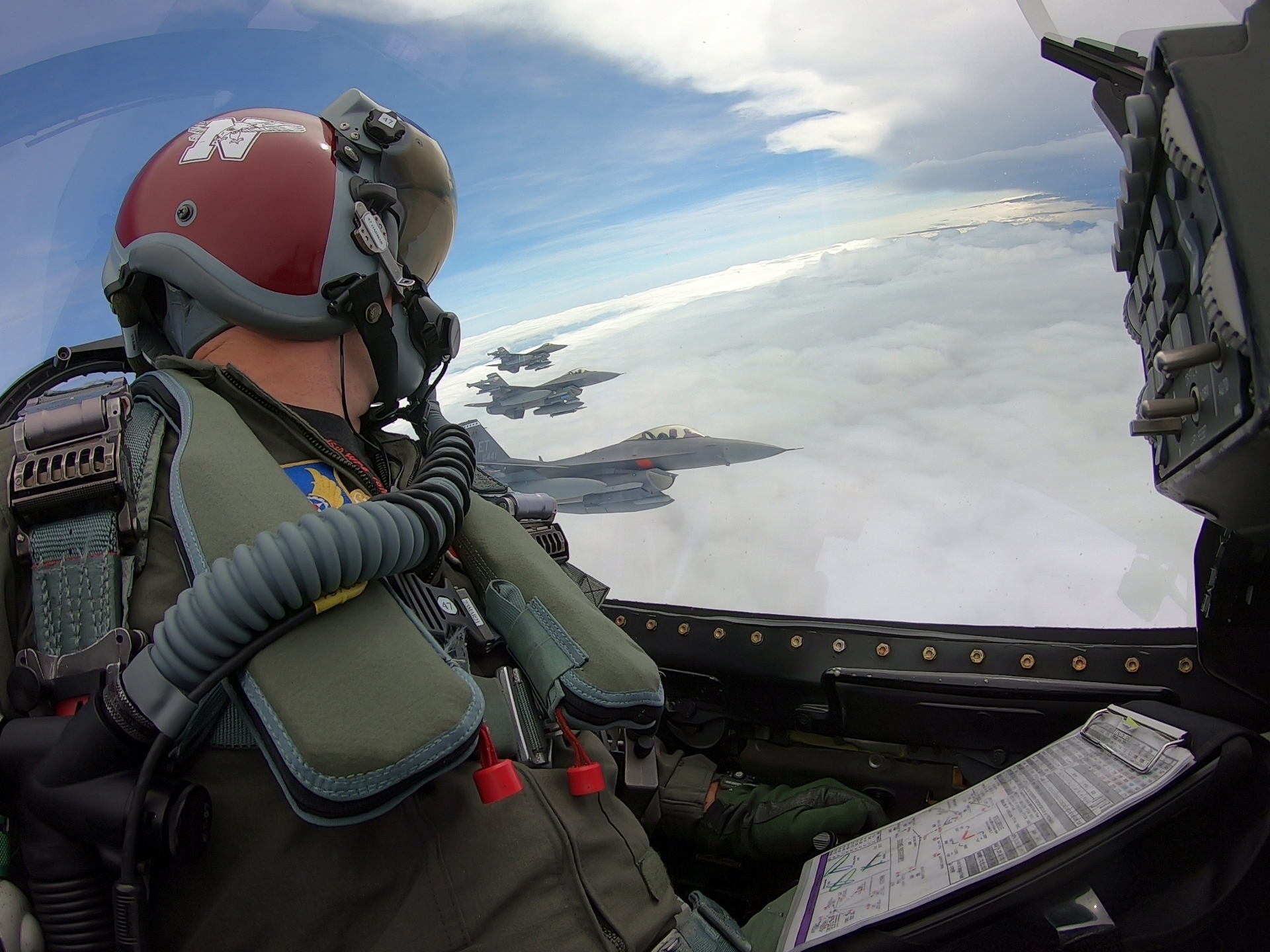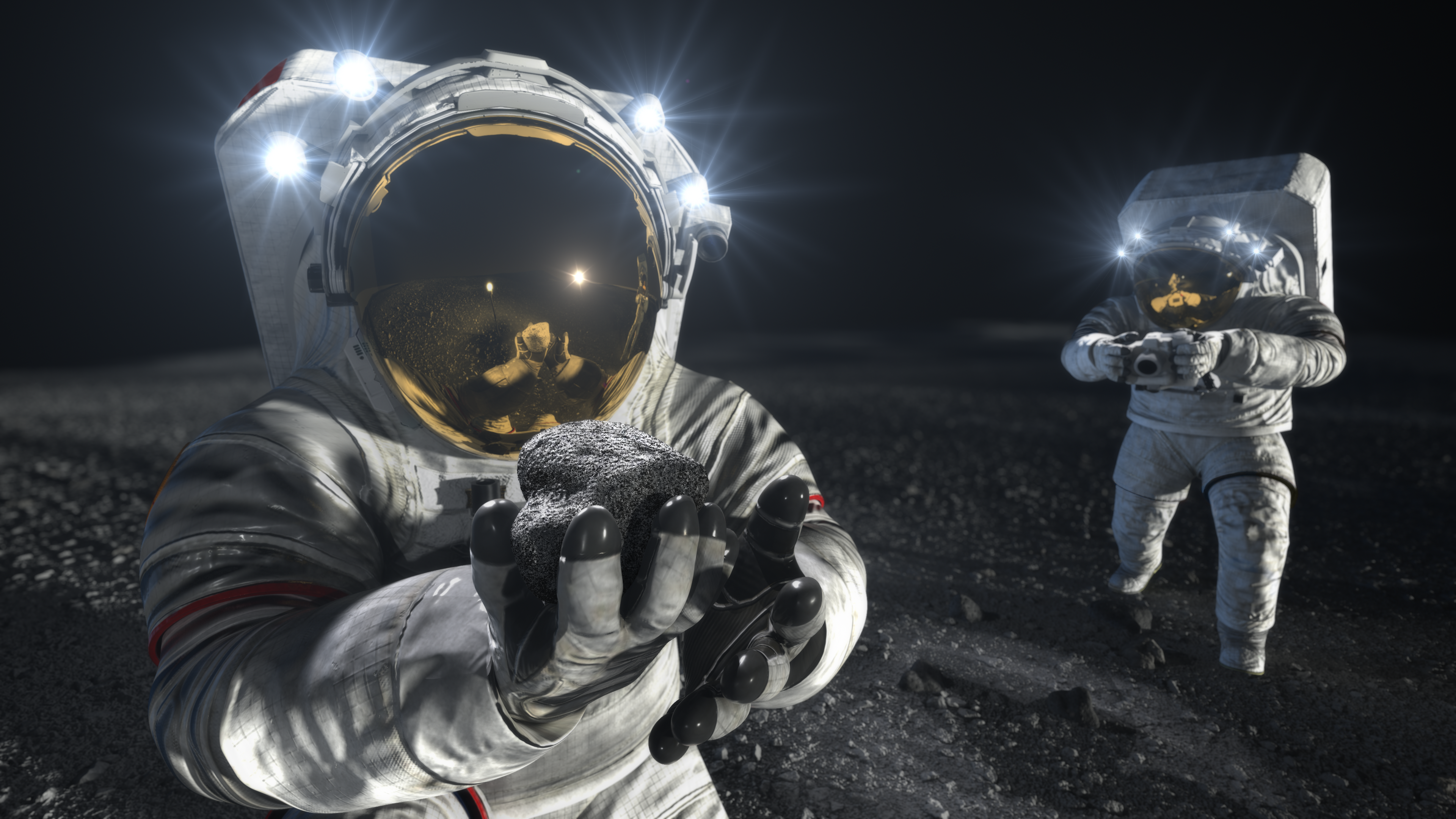How the superfast flight of astronauts and fighter pilots changes their brains
Unlike 'Top Gun', real-life fighter pilots are careful thinkers in the air. Learning how their brains change could assist astronauts with critical mission decisions, a new study says.

Will you be my wing pilot in space?
Brain scans of a few F-16 pilots with the Belgian Air Force suggest their cerebral connections change in ways that could predict how astronauts think in space. The key alteration is in neural plasticity: The brain adapts for a dangerous environment to let pilots — and likely also astronauts — make critical mission decisions on the fly, a new study argues.
Franchises like "Top Gun" (which featured F-14 Tomcats, not F-16s in the original 1986 film) are popular for military recruitment. That said, "Top Gun" and its 2022 "Maverick" sequel also attach false reputations to the fighter jet community, namely that pilots are brash, do not follow rules and spend little time studying their assignments.
By contrast, the new study shows just how careful and meticulous F-16 pilots must be in the air. Experienced pilots show specific types of brain connectivity due to their flying under "altered gravity levels [while] rapidly processing conflicting sensory information," according to a University of Antwerp press release.
Related: Tom Cruise returns to the danger zone in the triumphant 'Top Gun: Maverick' (Review)
The F-16, also called the Fighting Falcon in the U.S., is a single-engine jet fighter now built by Lockheed Martin Corp. The F-16A single-seater first flew in December 1976 and the first operational version of that jet was delivered in January 1979, according to U.S. Air Force materials. A two-seat trainer model, called the F-16B, is also available.
The aircraft is known for having a deeper seat angle than other jets so that the pilots may withstand up to nine times the force of gravity (nine Gs), the USAF says, "which exceeds the capability of other current fighter aircraft." F-16s also have high maneuverability and a long range, which is why they are popular among North Atlantic Treaty Organization (NATO) signatories. That's also why Belgium, a treaty member, has some F-16s of its own.
Breaking space news, the latest updates on rocket launches, skywatching events and more!
The study, which examined 10 Belgian pilots who have flown F-16s, suggested brain connectivity changes as pilots accrue flight hours. An example is sensorimotor information, or how the body makes sense of the environment through the senses, inner ear and limb position. Extreme conditions in military flight, meaning G-loads and maneuvers, likely account for these changes.
Experienced pilots, the study authors said, show more connectivity in the frontal lobe of the brain; that refers to a cerebral zone associated with behavior and voluntary movement. Pilots also process vestibular and visual information more quickly, with experience. This brain alteration may be due to forced prioritization in the air to focus on what is required in combat or high-speed conditions, such as reading cockpit instruments.
Related: What it's like to become a NASA astronaut: 10 surprising facts
To be sure, these military members are separate from the astronaut corps, so it is hard to draw direct associations from the study. Given the small sample size of the study, it's also hard to say how representative their brains would be of real-life military astronauts.
But the study authors do point to potential avenues of follow-up research, given that past studies concerning spaceflight and astronaut training suggest the brain may change in structure and function to adapt to off-Earth demands.
"Understanding these changes could help us to better prepare astronauts for long journeys, which is crucial if we are ever to reach other planets," the press release stated.
Military acumen has always been part of NASA recruitment, starting with the 1959 Mercury astronaut group. (The process was criticized at the time for preferring white male pilots, who still make up the majority of the military and as such, most military astronaut selectees at NASA. That said, NASA and the military are both taking strides for inclusivity in recent years.)
The military remains prevalent in NASA's astronaut corps: NASA said nearly 60 percent of astronauts it selected through 2017 were from one of the branches of the U.S. armed services, representing 216 individuals out of 375 selectees.
International agencies and commercial spaceflyers also have a fair share of military members due to their operational combat experience in extreme environments; that said, many scientific personnel and doctors have also flown in space to have different skillsets available in orbit.
The new study was published Wednesday (Feb. 15) in Frontiers in Physiology. It was led by Wilhelmina Radstake, who did a masters thesis on this topic while working as a masters student at the University of Antwerp.
Radstake conducted research in a laboratory led by tenured professor Floris Wuyts, whose research focuses on equilibrium investigations and aerospace; Wuyts is a long-time astronaut investigator with space research experience at entities like NASA and the European Space Agency.
Elizabeth Howell is the co-author of "Why Am I Taller?" (ECW Press, 2022; with Canadian astronaut Dave Williams), a book about space medicine. Follow her on Twitter @howellspace. Follow us on Twitter @Spacedotcom or Facebook.

Elizabeth Howell (she/her), Ph.D., was a staff writer in the spaceflight channel between 2022 and 2024 specializing in Canadian space news. She was contributing writer for Space.com for 10 years from 2012 to 2024. Elizabeth's reporting includes multiple exclusives with the White House, leading world coverage about a lost-and-found space tomato on the International Space Station, witnessing five human spaceflight launches on two continents, flying parabolic, working inside a spacesuit, and participating in a simulated Mars mission. Her latest book, "Why Am I Taller?" (ECW Press, 2022) is co-written with astronaut Dave Williams.


